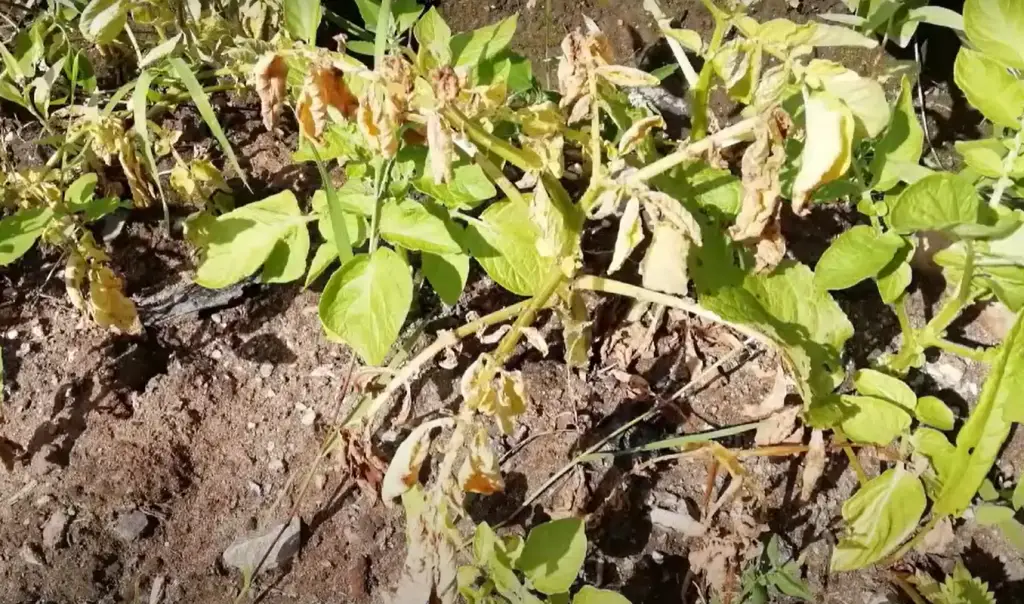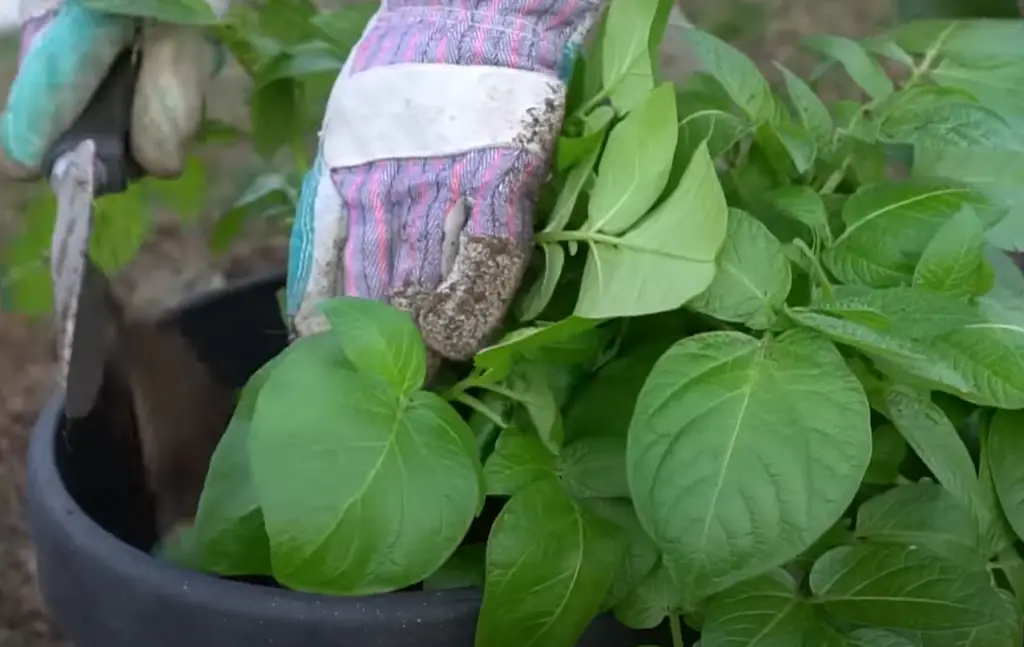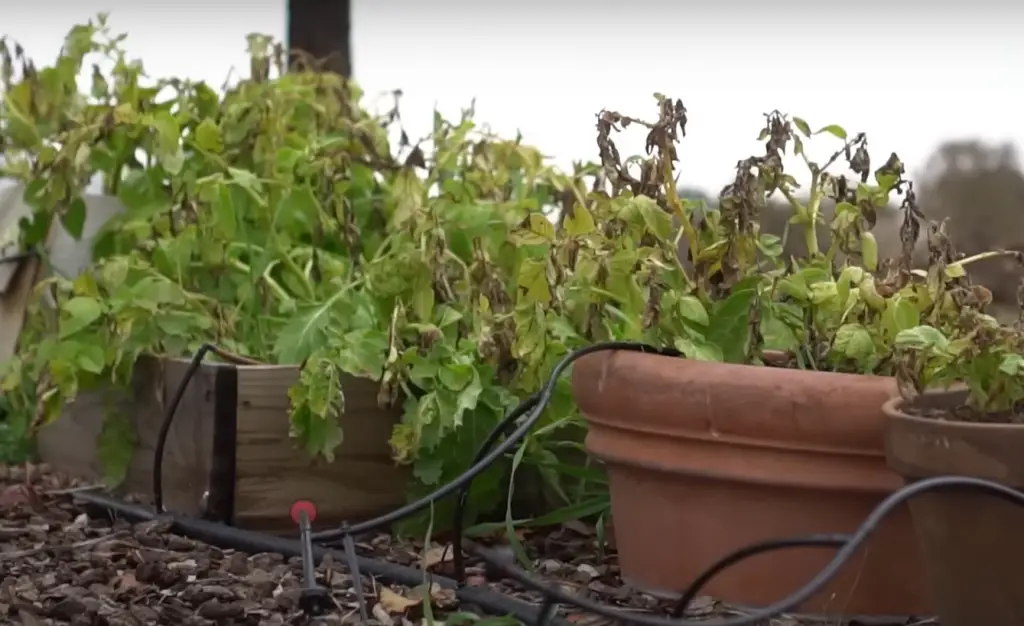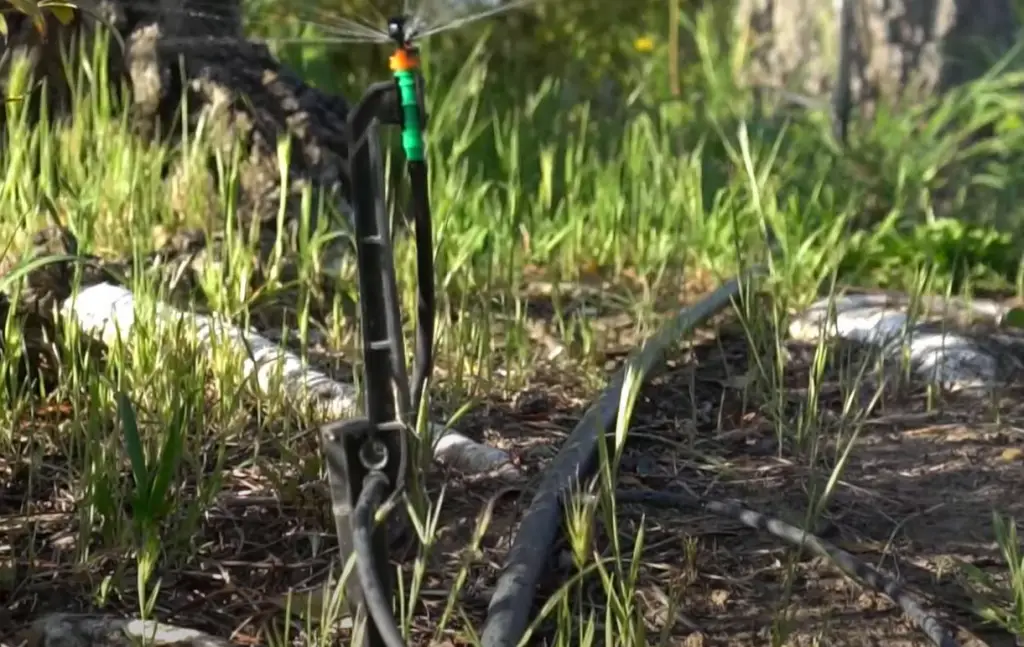Do you know how often to water potatoes to ensure your potato patch produces the highest yields? While it might seem stickling, providing proper irrigation for potato plants is essential if you want those succulent tubers to be large and tasty come harvest time. Luckily, with a little research and dedication, growing potatoes can become an incredibly rewarding experience without overwhelming levels of work or input – as long as you understand how much and when to water the plantings! In this article, we’ll discuss everything from standard watering techniques through to tips on more advanced irrigation options that will help maximize once-in-a-lifetime harvests of flavorful tubers!
About Potatoes
Potatoes, also known as spuds or taters, belong to the Solanaceae family, which also includes tomatoes, eggplants, and peppers. [1] Gardeners love growing these versatile tubers due to their adaptability to different conditions and climates.

Potatoes originate from South America but have been cultivated worldwide for centuries. Interestingly, potatoes have played a crucial role in human history, helping to prevent famine during times of hunger.
They are typically harvested when the leaves die back, usually in late summer or early autumn. Whether mashed, baked, boiled, or fried, potatoes remain a popular and nutritious staple food across many cultures.Planting potatoes
Planting potatoes can be a rewarding experience that produces delicious results. Whether you’re a seasoned gardener or new to the world of growing your own food, potatoes are a relatively easy crop to cultivate. They can be planted in the ground or in containers, making them suitable for all types of garden setups. In order to grow healthy potatoes, it’s important to choose the right variety for your climate and soil, provide plenty of sunlight and moisture, and take care to prevent pests and disease. With a little patience and effort, you can harvest a bountiful crop of potatoes and enjoy fresh, homemade meals all year long.
When to Plant Potatoes
If you’re wondering when to plant potatoes in your garden, the general rule of thumb is to wait until the soil temperature is consistently above 45°F. This usually happens in late March or early April in most regions. [3]Timing is important, as planting too early can result in rotting seed potatoes due to cold and wet soil, while planting too late can result in smaller yields and more susceptibility to pests and diseases. The best time to plant potatoes also depends on the variety you’re growing – early potatoes should be planted earlier in the season, while main crop potatoes can be planted later. Keep in mind that potatoes take about 80-120 days to mature, so plan accordingly for fall harvest. [4]
How to Plant Potatoes
Planting potatoes is one of the easiest and most rewarding gardening activities you can undertake.
When planting your potatoes, it is important to choose a sunny location and well-drained soil. You can plant potatoes from seed or from small seedlings, and you should aim to have your potatoes in the ground by early spring.
Be sure to spread a thick layer of compost or manure over the soil before planting, and add mulch around the plants once they begin to grow. With a little bit of care and attention, you can enjoy a bountiful harvest of delicious potatoes that you can enjoy in a variety of dishes.
Methods of Plant Potatoes
When it comes to planting potatoes, there are a few different methods you can choose from. The traditional way of planting potatoes is to dig trenches in the soil and plant the seedlings directly into the ground. However, this method can be labor-intensive and may not produce the highest yields. For city dwellers or those with limited space, container gardening is an excellent option for growing potatoes. Containers such as raised beds, large pots, or even old tires are suitable for planting potatoes – all you need is an area that gets plenty of sunlight and well-draining soil. With container gardening, harvest yields can be higher than traditional methods due to improved control over moisture and temperature levels.
Once you’ve chosen the method of planting your potatoes, it’s time to get started! Here is a step-by-step guide on how to plant potatoes:
- Choose seed potatoes and prepare them for planting. Potatoes can be purchased from garden centers or online.
- Before planting, cut the seed potatoes into 2” cubes with one eye per piece – these pieces will grow into new plants.
- Plant the seed potatoes in trenches 6-8” deep and 12-18” apart (for container gardens, bury them just beneath the surface). Cover with soil and water lightly. Make sure to leave a few inches of soil at the top of each trench so that when the plants begin to grow, they won’t be exposed.
- As the plants grow and start to flower, add more soil to the trenches until they are full of soil. This process is called “hilling” and helps protect the growing potatoes from pests and diseases while also improving drainage and air circulation around the plants.
- Keep an eye on your potato patch and continue to water regularly, making sure not to overwater or allow them to dry out completely. Depending on the variety, potatoes can take anywhere from 70-120 days before they’re ready for harvest!
Watering
In order to ensure maximum yields, it’s important to provide your potatoes with adequate water and nutrients. The amount of water needed will depend on the climate where you live – in dry or arid climates, potatoes may need watering every few days while in wetter climates they may need to be watered only once a week. When watering your potatoes, be sure to avoid over-saturating the soil as this can lead to disease and rot. If you live in an area with unpredictable rainfall, consider using a soaker hose or drip irrigation system to provide consistent and even watering.
Here are some useful tips for watering potatoes.
Schedule for Watering Potato Plants
Watering is an important part of growing potatoes, and it’s important to know when and how often to water the potato plants. Here is a schedule for watering potato plants:
- In the early stages, water lightly once per week.
- Once you see sprouts start to emerge from the soil, increase the frequency of irrigation to twice per week.
- When the leaves are fully formed, you can begin watering every other day or even daily if needed in hot climates.
- For mature plants with flowers and fruits beginning to form, water every day or two in order to keep the soil consistently moist but not soggy.
- Adjust your watering schedule as needed depending on rainfall and climate conditions.

In general, you should aim to provide the potato plants with about 2-3 inches of water per week — but be sure to water deeply so that the roots are able to absorb the moisture. Watering too lightly can cause potatoes to produce an abundance of small tubers, so keep an eye on your watering schedule and adjust it as needed. Also, make sure to use potting soil that has been aged properly, as this will help ensure that you get maximum absorption from your watering efforts. With careful watering and regular attention, you’ll have a bumper crop of potatoes in no time!
Potato Plant Watering Method
When it comes to watering potato plants, there are a few different methods you can use. The main consideration is how much water to give the plants and when.
- For lighter soils, you should have a deep but infrequent watering schedule. This means providing the soil with about 2-3 inches of water every 5-7 days.
- For heavier soils, however, you can provide more frequent and shallow waterings. Aim for 1 inch of water every 3-4 days to ensure that your potatoes don’t get too soggy or dry out completely between irrigation cycles.
No matter what type of soil you’re using, be sure to regularly check in on your plants throughout the growing cycle and adjust your watering schedule as needed. Pay close attention to the soil moisture levels and make sure not to over water, as this can cause potatoes to rot or become diseased.
How Much Water Do Potatoes Need?
Potatoes need an abundance of water to grow strong and healthy. To get the most out of your potting soil, you will want to give your potatoes plenty of water.
In The Garden
When planting potatoes in your garden, make sure to provide them with plenty of moisture. This will help the soil retain more nutrients and increase the growth rate of your plants. Generally speaking, potatoes need around 1-2 inches of water per week, depending on the climate and weather conditions.
You will also want to monitor the moisture content of your soil closely.
In A Container
When growing potatoes in a container, it is important to keep the soil consistently moist but not soggy. This means providing your plants with regular watering sessions – but not too often. Generally speaking, potatoes need around 1 inch of water per week when grown in containers; however, this can vary depending on climate and weather conditions.

It is also important to monitor the moisture content of your potting soil closely and adjust the amount of water needed as necessary. Too much or too little water can have a negative impact on yield and quality. Make sure that you are providing your potato plants with enough moisture so that they can grow strong and healthy!
Considerations When Watering Potato Plants
When watering your potatoes, you should be aware of the type and quality of water you are using. For example, if you are using tap water that has high levels of chlorine or chloramine, these can cause leaf burn on potato plants if they come in contact with the foliage. To avoid this, it’s best to allow tap water to sit out overnight before giving it to your plants.
You will also want to consider where you are watering your potatoes from. If you live in an area that is prone to drought or heat waves, opt for drip irrigation systems or soaker hoses instead of overhead sprinklers. This helps reduce evaporation and keeps more moisture in the soil for your potatoes.
When To Stop Watering Potatoes
When the leaves of your potato plants begin to turn yellow and start to curl up, this is a sign that they are ready to be harvested. At this point, you can stop watering them and wait for the potatoes to fully mature. Once the tops of your potato plants have died off completely, you can gently dig around them with a garden fork or spade and harvest your potatoes. [6]
By understanding how much water your potatoes need from planting until harvest, you will be able to get the most out of your potting soil and enjoy delicious homegrown potatoes all season long!
FAQ
Should I Water My Potatoes Everyday?
No, potatoes do not need to be watered every day. During their growing season, it’s best to water your potatoes thoroughly every other day and allow the soil to dry out slightly in between waterings. Doing this helps ensure that the roots are getting enough moisture without drowning them in too much water.
How much water is in a potato?
A medium-sized potato contains about 75% water. This is why it’s so important to keep the soil moist but not soggy when growing potatoes – too much water can cause them to rot or become diseased.
Can You Water Potatoes Too Much?
Yes, you can water potatoes too much. If the soil is always wet or soggy, this can cause the roots of your potato plants to rot and prevent them from producing healthy potatoes. To avoid this, make sure to give your potatoes a thorough watering every other day and allow the soil to dry out slightly in between waterings.
Can I Use Tap Water To Water My Potatoes?
Yes, you can use tap water to water your potatoes as long as it doesn’t contain high levels of chlorine or chloramine.

To avoid leaf burn on your potato plants, it’s best to let tap water sit overnight before using it on your plants. Doing this helps remove any harmful chemicals that could potentially damage your vegetables.
What Happens if You Don’t Water Potatoes?
If you don’t water potatoes, they will not be able to produce healthy vegetables. Potatoes need an abundance of water to grow strong and healthy. Without it, the roots can dry out and the plant’s growth can be stunted or prevented altogether. To ensure that your potatoes get enough moisture, make sure to give them a thorough watering at least twice a week during their growing season.
Will the Plants Tell Me When They Need Watering?
Yes, the plants will tell you when they need watering. If the leaves of your potato plants start to curl up and turn yellow, this is a sign that they need more water. To give them the best chance at producing healthy vegetables, water them thoroughly every other day and allow the soil to dry out slightly in between waterings. Doing this helps ensure that the roots get enough moisture while preventing them from drowning in too much water.
Is It Okay to Let the Soil Dry Out?
Yes, it is okay to let the soil dry out slightly in between waterings. Doing this helps ensure that the roots are not sitting in soggy soil and it also encourages strong root growth. Make sure to give your potatoes a thorough watering every other day during their growing season and they will produce healthy vegetables.
How Much Water Should I Use?
When watering your potatoes, you should aim to give them at least two to three inches of water for every foot of soil. Doing this helps ensure that the roots get enough moisture and encourages healthy growth. If you are using a drip irrigation system or soaker hoses, these can help reduce evaporation and keep more moisture in the soil for your potatoes.
Useful Video: HOW OFTEN TO WATER POTATOES
Conclusions
Potato farming is a time-honored tradition that has been around for hundreds of years. While more new and modern methods of irrigation may be available nowadays, simple and sustainable watering practices are often the best way to ensure healthy and abundant harvests. By understanding when and how much to water your potato plantings, you can maximize yields while minimizing maintenance demands. Giving your potato plants the hydration they need will help reap benefits far beyond the satisfaction of producing homegrown spuds – they’ll thank you in flavor too! So, now that you have all the information included herein about proper potato irrigation, why not take a break from your other gardening endeavors and give it a try? Go ahead – cultivate a successful potato patch today!
References:
- https://carnegiemnh.org/potatoes-sweet-potatoes-yams-whats-difference/#:~:text=Potatoes%20belong%20to%20the%20nightshade,the%20fourth%20most%20farmed%20crop.
- https://www.kew.org/plants/potato#:~:text=As%20a%20result%20of%20years,over%205000%20varieties%20of%20potatoes.
- https://greenhouseemporium.com/greenhouse-gardening-how-to-grow-potatoes/#:~:text=Garden%20potatoes%20are%20typically%20planted,winter%20for%20a%20spring%20harvest!
- https://greenupside.com/how-long-to-grow-potatoes-days-to-maturity-3-key-ideas/
- https://balconybeauty.com/how-to-grow-potatoes-on-a-balcony/
- https://www.almanac.com/plant/potatoes










Leave a Reply
View Comments